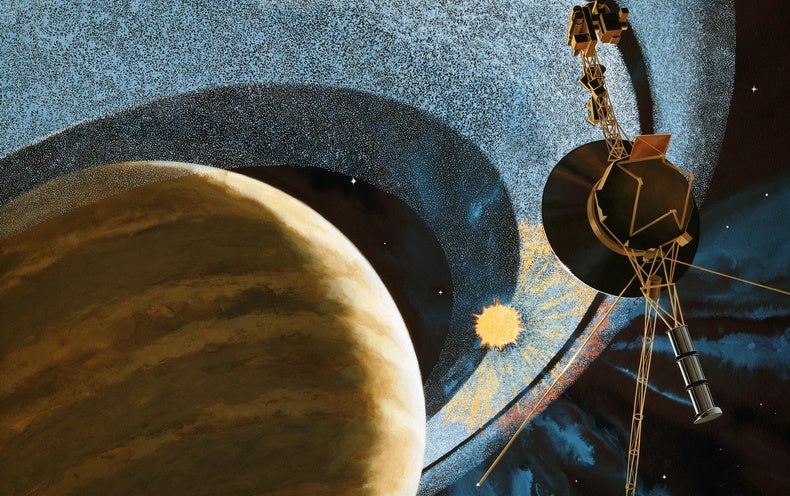A glitch may have silenced NASA’s Voyager 2 spacecraft until mid-October—but a “heartbeat” signal offers hope for reestablishing contact earlier.
Earth may not hear from one of its most beloved spacecraft until mid-October because of a glitch that altered Voyager 2’s orientation to our planet. But NASA engineers have caught a “heartbeat” signal that the agency says might help it reestablish communications sooner.
“A series of planned commands sent to NASA’s Voyager 2 spacecraft July 21 inadvertently caused the antenna to point 2 degrees away from Earth,” wrote NASA officials in a July 28 statement. “As a result, Voyager 2 is currently unable to receive commands or transmit data back to Earth.”
Since the initial glitch, NASA has detected what mission personnel call a carrier signal from the spacecraft, which confirms that it’s still operating properly.
“A bit like hearing the spacecraft’s ‘heartbeat,’ it confirms the spacecraft is still broadcasting, which engineers expected,” wrote officials at NASA’s Jet Propulsion Laboratory, which operates the spacecraft, in a tweet on August 1. “Engineers will now try to send Voyager 2 a command to point itself back at Earth.”
If that doesn’t work, NASA expects Voyager 2 will resume communications in October thanks to regularly scheduled commands that direct the spacecraft to reset its orientation. The next of these reorientation maneuvers will occur on October 15.
Voyager 2 launched in August of 1977, about two weeks before its twin Voyager 1, which swung past Jupiter and Saturn, followed by Titan, Saturn’s largest moon. Voyager 2 took a different path, zipping by Jupiter and Saturn and then Uranus and Neptune. To date, it remains the only spacecraft to ever visit the latter two planets.


